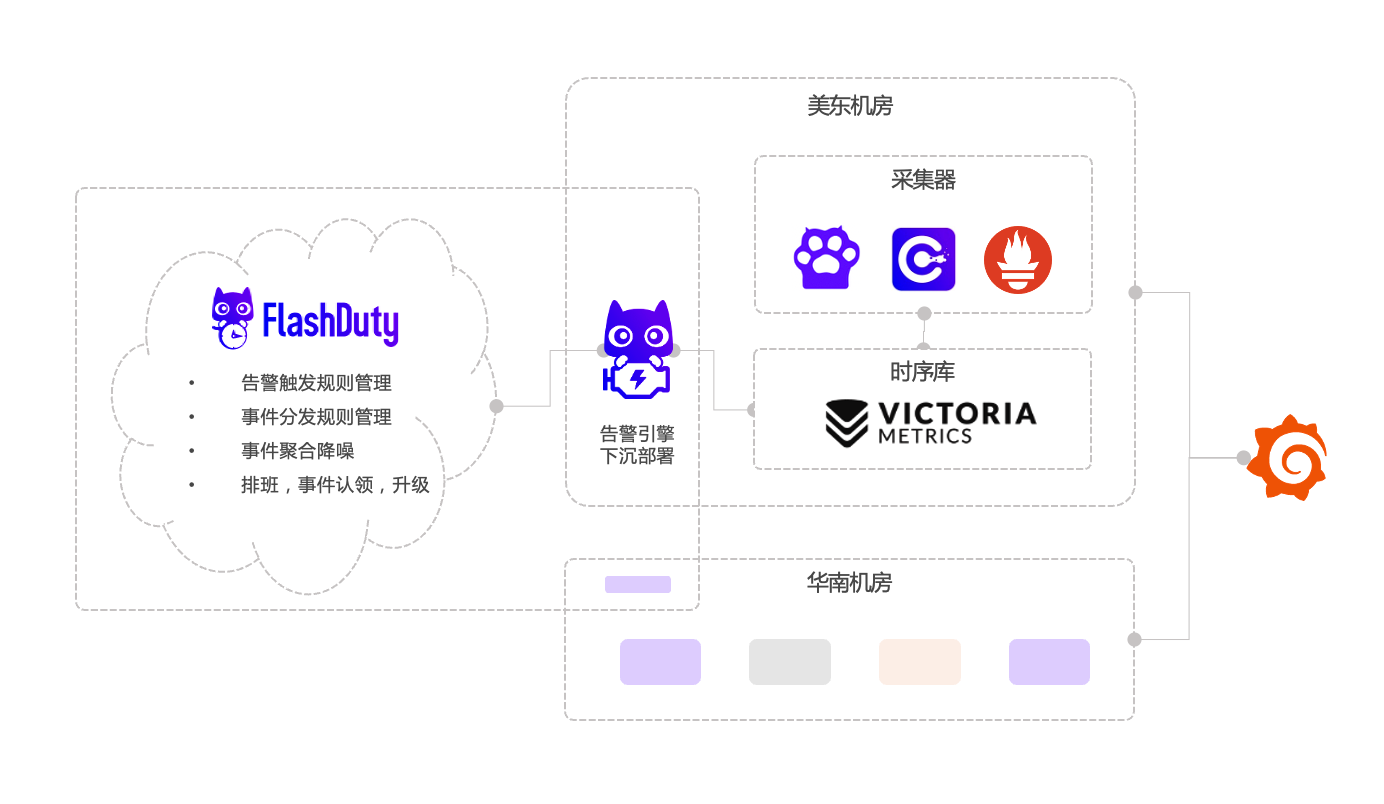Introduction
What is the Alert Engine (Monitors)?
Alert Engine (Monitors) Architecture Design

monitedge instance deployed, responsible for alert evaluation of data sources within their respective data centers and pushing alert events to the SaaS side.monitedge instance to handle alert evaluation for all data sources.monitedge, you can also deploy multiple monitedge instances to form a cluster. For example, deploy 2 monitedge instances in the East US data center to form a cluster, setting the same cluster name through the --alerter.clusterName meidong parameter when starting the instances; deploy 2 monitedge instances in the South China data center to form another cluster, setting another cluster name through the --alerter.clusterName huanan parameter when starting these two instances.monitedge instance to process 50 rules respectively. If one instance fails, another instance will take over the processing of all 100 alert rules, ensuring high availability while avoiding duplicate alert event delivery.修改于 2025-11-08 06:21:29



